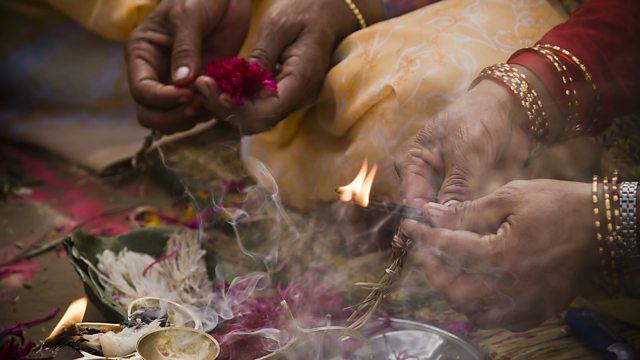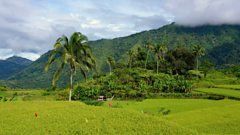How did humans discover medicine?
Diseases have always been with us, but when did we first find ways to cure them? CrowdScience reveals the earliest evidence for plants being used as medicine.
Today, once-fatal diseases like the plague, sepsis, or cholera can be treated simply and quickly with a pill. These tiny tablets hold compounds that can fix illnesses, and most people don’t think twice about taking an asparin for a headache.
Modern medicine looks nothing like the plants that many of them are derived from. But there must have been a moment, when the first humans decided that a particular plant, fungus, or mineral might cure them of an upset stomach, or infected wound. Right? That’s what listener Andrew Chen wondered, so he emailed CrowdScience to find answers.
Presenter Anand Jagatia speaks with an archaeologist, a botanist, an ethno-pharmacologist, a zoologist and a historian to uncover the story of early human experimentation with ‘drugs’ from plants, fungi, animals and minerals.
The history of humans is full of illness and poor health, and it seems we’ve always tried to fix this. Anand discovers the connection between food and medicine while making tonic water from scratch with Kim Walker at the Royal Botanic Gardens of Kew, and tastes the daisy-like Chinese herb that was first used thousands of years ago, and then – once tested - became one of the best modern drugs for treating the world’s most deadly infectious disease.
Listener Andrew’s inspiration came from a previous episode of CrowdScience ‘Who were the first farmers?’ and so we return to expert anthropologist Cheryl Makerewicz who tells us about the ecological knowledge of hunter-gatherers and pastoralist communities. With Jaap de Roode, Anand discovers that conscious thought isn’t a pre-requisite of medical discovery, and historian Vivienne Lo explains how written word helped to standardise generations of medical knowledge in East Asia. Previously medical knowledge had been irrevocably linked with shamanism, magic and spirituality, but with modern medicine this changed – but today there is still much we can learn from ancient forms of knowledge, Christophe Wiart explains how his science focuses of discovering what plants tribal people in east Asia have used for centuries to cure their ailments. These early methods may help us combat new diseases today.
Presented by Anand Jagatia
Produced by Rory Galloway
[Photo: Women using plant medicines. Credit: Getty Images]
Last on
More episodes
Next
Clip
-
![]()
Recording shamanic medicine for science
Duration: 01:32
Broadcasts
- Fri 7 Feb 2020 20:32GMT����ý World Service Australasia, Online, Americas and the Caribbean, UK DAB/Freeview & Europe and the Middle East only
- Fri 7 Feb 2020 21:32GMT����ý World Service News Internet & East Asia only
- Sun 9 Feb 2020 00:32GMT����ý World Service
- Mon 10 Feb 2020 05:32GMT����ý World Service Online, UK DAB/Freeview, News Internet & Europe and the Middle East only
- Mon 10 Feb 2020 06:32GMT����ý World Service Australasia, Americas and the Caribbean & South Asia only
- Mon 10 Feb 2020 07:32GMT����ý World Service East and Southern Africa & East Asia only
- Mon 10 Feb 2020 11:32GMT����ý World Service West and Central Africa
- Mon 10 Feb 2020 14:32GMT����ý World Service Australasia
- Mon 10 Feb 2020 18:32GMT����ý World Service East and Southern Africa, South Asia & West and Central Africa only
Podcast
-
![]()
CrowdScience
Answering your questions about life, Earth and the universe



